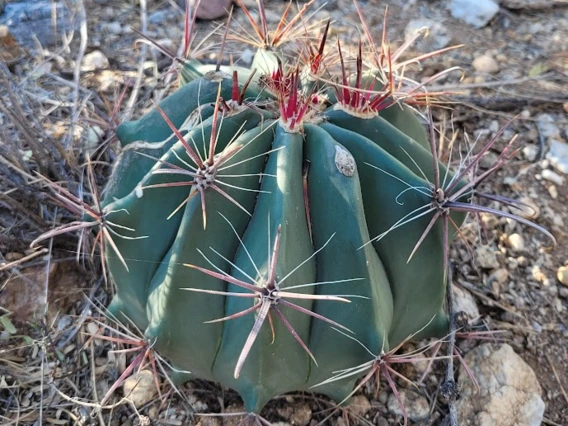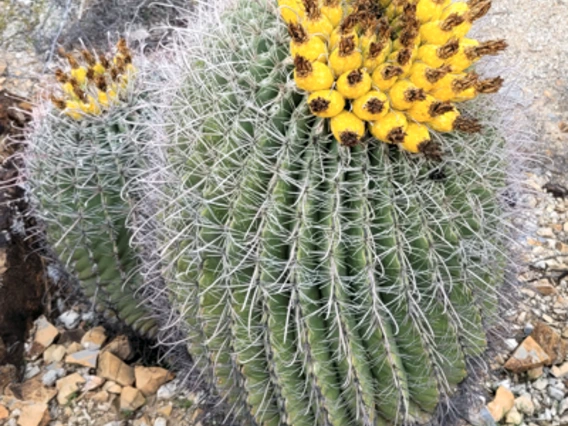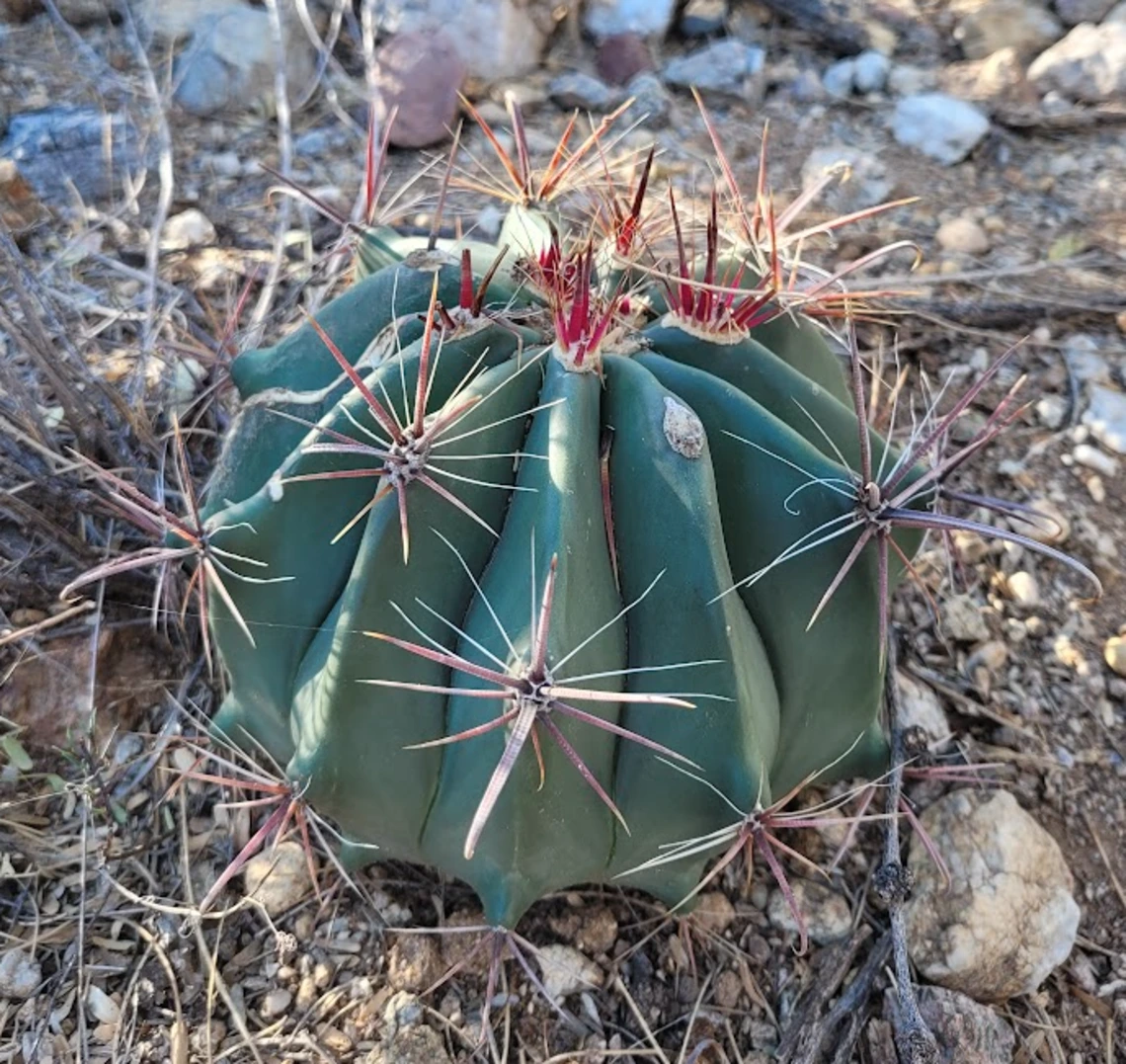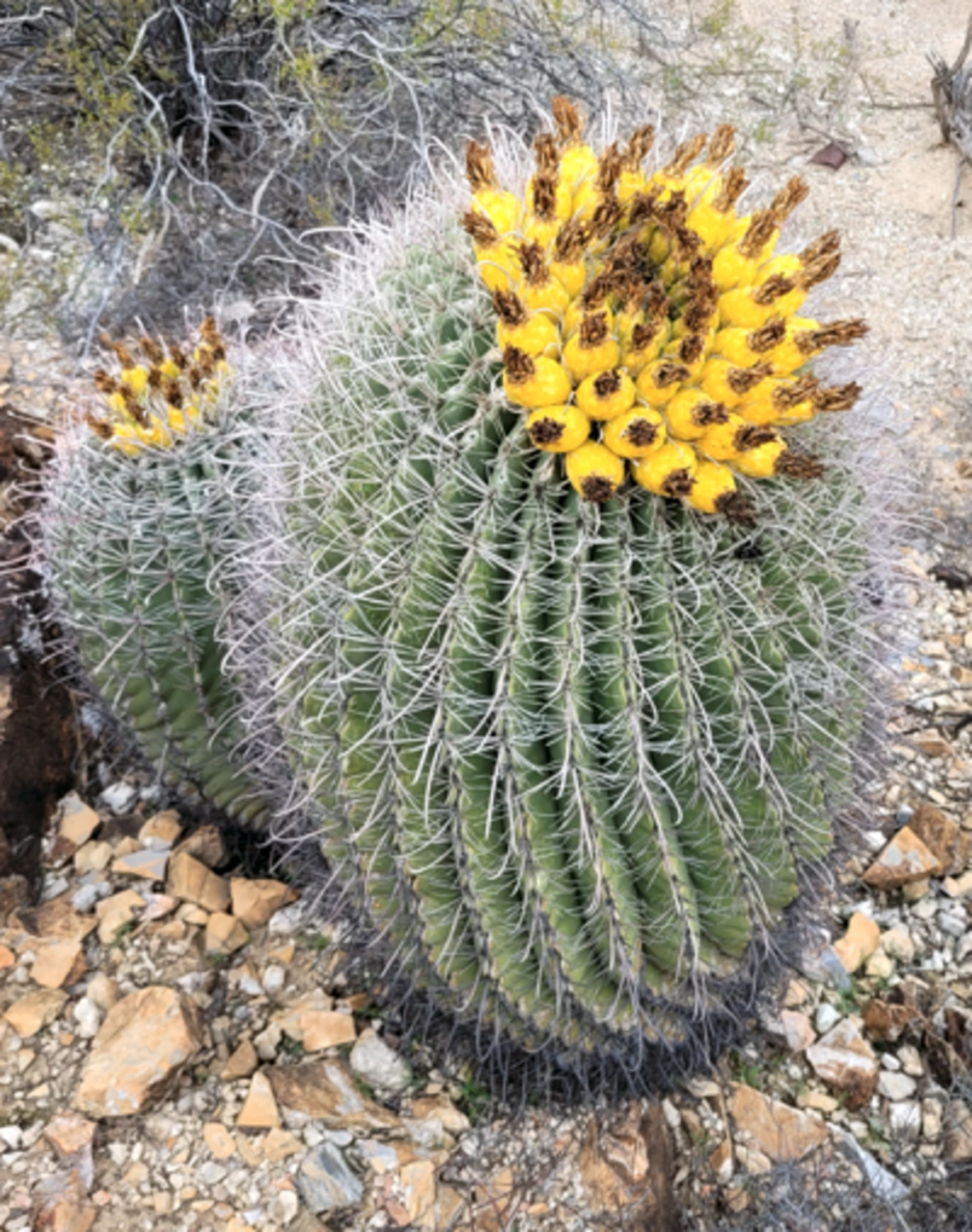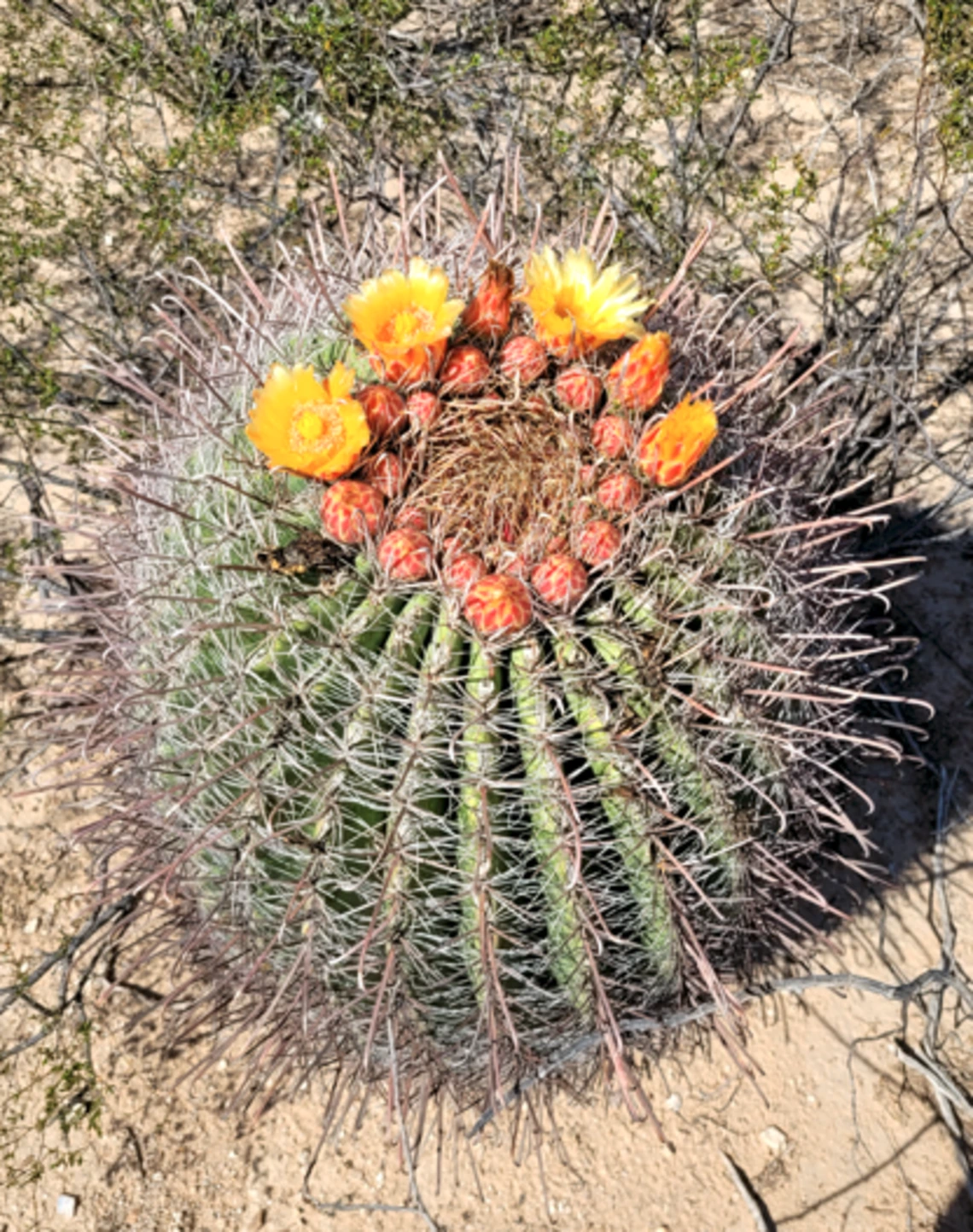Family: Cactaceae
Compound: Fer wiz
Synonyms: Echinocactus wislizeni
Geographic Origin: southwestern US, north-central MX
Characteristics: A robust, dark green, globular to short columnar cactus, with 20 to 30 woody ribs. These ribs allow the plant to expand and contract like an accordion depending on how much water they are holding. A combination of strong, stiff spines and thin, hair-like ones radiate from the areoles that run along the ribs. These are an important feature for distinguishing this species from F. emoryi. The large spines that protrude from the center of the areoles can be up to 10.15cm (4in) long and strongly curved, forming a hook and giving the cactus its name. The spines of this species are variable in color, ranging from white to red to gray. This species produces red-orange-yellow flowers in a ring near the meristem. From these cup-shaped flowers develop scaly, oval-shaped and brilliant, yellow fruits strongly resembling a pineapple. The fruits are fleshy and contain hundreds of tiny spherical black seeds. Older individuals can start to lean over time, eventually laying on the ground and growing horizontally along it.
Natural History: Found between 304-1371m (1,000-4,500ft) along desert washes, in sandy flats, alluvial fans, bajadas and slopes, and up into grasslands and low elevation oak woodland edges. The flowers of this species are quite conspicuous and visited by many pollinators. The fruits are edible, and likely an important food source for wildlife. After death, the decomposing bodies of large cacti like these provide shelter and food for many small animals. The fleshy tissues of the cacti are consumed by big horn sheep during seasonal droughts
Cultivation Notes: Easily grown from seed, which fall out of the base of the fruit when plucked from plant. Adult plants can take partial to full sun, though care must be taken to acclimate them to these conditions if being transplanted. Make sure that the side of the plant that was facing south at the nursery is still facing south when planted in your yard. When grown in containers, a fast-draining soil mix is ideal to avoid rot, but in the ground, they tolerate poorer soils.
For general cactus and succulent propagation information, click here
Ethnobotany: These plants have been used both as a food source and for trade by indigenous people of the American Southwest. The seed can be eaten fresh, or ground, boiled and turned into a paste for consumption. The spines are used for hunting by heating and then bending them or to make hooks for fishing. In modern landscaping, the plant is favored for its striking appearance and low water use.
Citations:
Mielke, Judy. Native Plants for Southwestern Landscapes. University of Texas Press, 1993.
Arizona State University. Retrieved April 12, 2018.
http://www.public.asu.edu/~camartin/plants/Plant%20html%20files/Ferocactuscylindraceus.html
US Forest Service. Retrieved April 12, 2018.
https://www.fs.usda.gov/database/feis/plants/cactus/ferwis/all.html
SEINet Arizona – New Mexico Chapter. Retrieved June 23, 2024.


